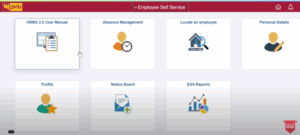5 Tips for Your Complete Financial Planning

Everyone aspires to be wealthy. But how many of them truly work to become wealthy?
To maximize your wealth while ensuring enough liquidity, you’ll also need to invest your earnings in the appropriate instruments at the right time.
There is a plethora of advice available on the internet on how to create a budget, make a financial plan, or manage investments more actively. However, newbies to financial planning may feel burdened due to the volume of “qualified” financial advice available. Having one clear first step can be useful for getting started.
Here are the 5 tips you need to follow for your complete financial planning.
1. Invest First, then Spend
Most individuals typically do this in reverse. They first spend their income, and then they invest the remaining amount. But this is not ideal.
If your goal is to grow your money and accumulate wealth, the order should be reversed.
Following the 50-20-30 rule is recommended where 50% of your income is for your utilities, household expenses and other needs, 20% is for your investments and 30% is for your wants. This percentage is not set in stone and can be changed based on your financial situation and goals.
For instance, you can decide to make more investments in the coming year to meet a goal which could be buying a home.
It would be wise to take your time with important investing selections and, if necessary, seek the advice of a competent investment advisor.
2. Get Sufficient Life Insurance Coverage
Although many people are aware of and value life insurance, only a small percentage obtain enough coverage. At least 10 times your annual salary should be included in your life insurance term plan.
And if you’ve only recently begun your profession, this cover should be even higher, as at the beginning of your career your compensation is lower but your advancement is quicker and higher than someone who has a good number of years of experience.
3. Make a Cash Reserve
An emergency can occur at any time. Loss of a job, a business, or any other regular source of income could qualify as this. And in such cases, there should always be an emergency fund or cash reserve from which money can be withdrawn.
You should ideally have 6 months to a year’s worth of salary saved as emergency savings. Additionally, this amount should be easily accessible at a moment’s notice.
4. Have Attainable Goals
Having a goal is important. It is difficult to have any clarity on your spending or investments if you are unaware of where and how you are spending your hard earned money. These goals can be ‘small’ such as buying a new phone or ‘large’ such as purchasing a new plot of land. It is also recommended that you add a tentative timeline to achieve these goals so that you will be able to plan your investments wisely.
Once you’ve decided on this, you can plan out how and where to save/invest. Investment is what helps your money grow and produce returns that will allow you to outpace inflation and help you achieve your goals.
5. Boost your creditworthiness
The majority of banks now tie a borrower’s credit score to the interest rate on loans. It implies that you may pay a higher interest rate on your loans if you have a low credit score. You may even be ineligible to qualify for some loans if you have an extremely low score.
As a result, it’s crucial to improve your credit score if you intend to borrow money to buy a house or a car or to develop your business.
To raise your credit score, you should also try to avoid applying for many loans or credit cards at once, keep your use of revolving credit to a minimum, and refrain from abruptly closing a credit card that you’ve had for a while.
However, if you are borrowing a personal loan from moneyview, it approves your loan application even with a credit score that is appreciably low, subject to a minimum CIBIL score of 600.
Before the loan amount is successfully disbursed, you can check every detail of your repayment schedule including monthly EMIs from the on-site EMI calculator present in the site. It is a handy tool that solves the hassle of calculating your monthly EMI amounts manually.
Conclusion
If you base your financial planning decisions on tried-and-tested tips as mentioned in this blog, it will help you reach your short and long-term financial goals on schedule.
Based on your financial objectives, you must develop practical tactics and adhere to them throughout the course. Additionally, you must periodically evaluate them and make improvements.
FAQs
1. What is financial planning, and how does it work?
Creating and implementing a plan for your financial future is known as financial planning.
The steps involved in financial planning are assessing your net worth and risk profile, creating short- and long-term financial goals, and periodically reviewing your goals as needed.
It also includes methods for planning for your family’s future and retiring without concern for money.
2. How much money can I put into a SIP?
There is no cap on how much you can put into a SIP. SIP refers to the “systematic investment plan,” which is one of the two types of investment plans for a mutual fund, the other being Lump-sum investment.
The smallest amount you can invest each month is Rs. 500. You simply need to find the ideal mutual fund that has significant asset class investments done by a competent fund manager and their team of analysts and staff.
3. What is the longest possible term for a SIP?
A SIP’s tenure is not limited in any way. As long as you can, you can invest. You can stay for a minimum of three years.
In the case of open-ended SIPs, you can keep on reinvesting the money and even dividend payouts for years and even pull out the required money any time.
4. What is a credit score?
The creditworthiness of a consumer is indicated by a number between 300 and 850 called a credit score. A credit score takes into account a person’s debt amount, duration of credit history, loan kinds, and payback history.
5. Where do you begin Investing?
You have two options for investing: you may do it yourself and choose investments based on your investing style, or you can work with a professional, like a broker or advisor.
Create a plan detailing how much, how frequently and in what amounts you want to invest. Don’t forget that you don’t need a lot of money to start, and you can change as your needs change.
Make sure the target investment is in line with your strategy and has the potential to produce the desired results before allocating your resources.
6. What sorts of investments are there?
There are numerous investment options available. The most popular ones are probably equities, bonds, property, and ETFs/mutual funds.
Real estate, certificates of deposit, annuities, cryptocurrencies, commodities, collectibles, and precious metals are more investment options to think about.
7. What does “debt” mean?
Debt can be defined as the sum that the borrower owes the lender. A debt is an amount of money that has been borrowed for a set period and must be repaid, plus interest.
The borrower’s creditworthiness affects both the debt’s size and its approval. Clearing your debt is always a smart choice.

Pranab Bhandari is an Editor of the Financial Blog “Financebuzz”. Apart from writing informative financial articles for his blog, he is a regular contributor to many national and international publications namely Tweak Your Biz, Growth Rocks ETC.






